The LOS/NLOS Classification Method Based on Deep Learning for the UWB Localization System in Coal Mines
Abstract
:1. Introduction
- 1
- We propose a NLOS recognition method based on deep learning to distinguish whether a UWB signal transmission is blocked in coal mines. We use the diagnostic data in theDW1000 register as the data feature of deep learning, and analyze the classification performance of multilayer perceptrons and a convolutional neural network;
- 2
- We propose a method for data enhancement based on generative adversarial networks (GAN) to solve the problem of class imbalance of data samples. We use this method to generate a new data set and compare the performance of the new data set with the original data set on the same classifier;
- 3
- We propose a trilateral centroid positioning algorithm, and propose how to calculate the location result of the algorithm when a non-ideal situation occurs. Finally, we corrected the results with the map constraints;
- 4
- We designed static and dynamic experiments to verify our system, and evaluated the proposed techniques through experiments and analysis.
2. Related Work and Positioning System Structure
3. Nlos and Los Classification Based on Deep Learning Algorithm
3.1. Data Augmentation by Generative Adversarial Networks
3.2. Multilayer Perceptrons for Classification Problems
3.3. Convolutional Neural Networks for Classification Problems
4. Location Algorithm Based on Ranging
4.1. Composition of Ranging Errors
4.2. Linear Model and Kalman Filter
4.3. Trilateral Centroid Positioning Algorithm
5. Experiment, Results and Discussion
5.1. Experiment Set Up and Data Collection
5.1.1. Hardware Platform
5.1.2. Data for Training Network Model
5.1.3. Data for Testing Position System
5.2. Experimental Results and Discussion
5.2.1. Network Model Training Results and Discussion
5.2.2. Localization System Test Results and Discussion
6. Conclusions
Author Contributions
Funding
Acknowledgments
Conflicts of Interest
References
- Choliz, J.; Eguizabal, M.; Hernandezsolana, A.; Valdovinos, A. Comparison of Algorithms for UWB Indoor Location and Tracking Systems. In Proceedings of the 2011 IEEE 73rd Vehicular Technology Conference (VTC Spring), Budapest, Hungary, 15–18 May 2011. [Google Scholar]
- Cheng, L.; Zhao, A.; Wang, K.; Li, H.; Chang, R. Activity Recognition and Localization based on UWB Indoor Positioning System and Machine Learning. In Proceedings of the 2020 11th IEEE Annual Information Technology, Electronics and Mobile Communication Conference (IEMCON), Vancouver, BC, Canada, 4–7 November 2020. [Google Scholar]
- Li, B.; Zhao, K.; Saydam, S.; Rizos, C.; Wang, J.; Wang, Q. Third Generation Positioning System for Underground Mine Environments: An Update on Progress; Far East Journal of Electronics and Communications (FJEC): Prayagraj, India, 2018. [Google Scholar]
- Aca, B.; Pf, B.; Pmt, B. UWB-based sensor networks for localization in mining environments. Ad Hoc Netw. 2009, 7, 987–1000. [Google Scholar]
- Capraro, F.; Segura, M.; Sisterna, C. Human Real Time Localization System in Underground Mines using UWB. IEEE Lat. Am. Trans. 2020, 18, 392–399. [Google Scholar] [CrossRef]
- Zheng, X.; Wang, B.; Zhao, J. High-precision positioning of mine personnel based on wireless pulse technology. PLoS ONE 2019, 14, e0220471. [Google Scholar] [CrossRef] [PubMed] [Green Version]
- Bao, J.; Wang, H.; Research on Key Technologies of High-Precision Location Based Service System for Intelligent Mines. ResearchGate.PrePrint. Version 1. Posted 17 December 2020. Available online: https://www.sciencegate.app/app/document/download#10.21203/rs.3.rs-127354/v1 (accessed on 29 May 2022).
- Ming, L. A Novel Ultra-Wideband Hybrid Localization Scheme in Coal Mine. J. Commun. 2015, 10, 889–895. [Google Scholar]
- Yoon, J.; Kim, H.; Seo, D.; Nam, H. Performance Comparison of NLOS Detection Methods in UWB. In Proceedings of the 2021 International Conference on Information and Communication Technology Convergence (ICTC), Jeju Island, Korea, 19–21 October 2021; pp. 1486–1489. [Google Scholar] [CrossRef]
- Liu, Q.; Yin, Z.; Zhao, Y.; Wu, Z.; Wu, M. UWB LOS/NLOS identification in multiple indoor environments using deep learning methods. Phys. Commun. 2022, 52, 101695. [Google Scholar] [CrossRef]
- Altstidl, T.; Kram, S.; Herrmann, O.; Stahlke, M.; Feigl, T.; Mutschler, C. Accuracy-Aware Compression of Channel Impulse Responses using Deep Learning. In Proceedings of the 2021 International Conference on Indoor Positioning and Indoor Navigation (IPIN), Lloret de Mar, Spain, 29 November–2 December 2021; pp. 1–8. [Google Scholar] [CrossRef]
- Song, B.; Li, S.L.; Tan, M.; Ren, Q.H. A fast imbalanced binary classification approach to NLOS identification in UWB positioning. Math. Probl. Eng. 2018, 2018, 1580147. [Google Scholar] [CrossRef]
- Fan, R.; Du, X. NLOS Error Mitigation Using Weighted Least Squares and Kalman Filter in UWB Positioning. arXiv 2022, arXiv:2205.05939. [Google Scholar]
- Liu, R.; Yuen, C.; Do, T.N.; Jiao, D.; Liu, X.; Tan, U.X. Cooperative Relative Positioning of Mobile Users by Fusing IMU Inertial and UWB Ranging Information. In Proceedings of the 2017 IEEE International Conference on Robotics and Automation (ICRA), Singapore, 29 May–3 June 2017. [Google Scholar]
- Savic, V.; Ferrer-Coll, J.; Angskog, P.; Chilo, J.; Stenumgaard, P.; Larsson, E.G. Measurement Analysis and Channel Modeling for TOA-Based Ranging in Tunnels. IEEE Trans. Wirel. Commun. 2015, 14, 456–467. [Google Scholar] [CrossRef] [Green Version]
- Jiang, C.; Shen, J.; Chen, S.; Chen, Y.; Liu, D.; Bo, Y. UWB NLOS/LOS Classification Using Deep Learning Method. IEEE Commun. Lett. 2020, 24, 2226–2230. [Google Scholar] [CrossRef]
- Sang, C.L.; Steinhagen, B.; Homburg, J.D.; Adams, M.; Rückert, U. Identification of NLOS and Multi-Path Conditions in UWB Localization Using Machine Learning Methods. Appl. Sci. 2020, 10, 3980. [Google Scholar] [CrossRef]
- Tran, D.H.; Chung, B.; Jang, Y.M. GAN-based Data Augmentation for UWB NLOS Identification Using Machine Learning. In Proceedings of the 2022 International Conference on Artificial Intelligence in Information and Communication (ICAIIC), Jeju Island, Korea, 21–24 February 2022; pp. 417–420. [Google Scholar] [CrossRef]
- Kaemarungsi, K.; Krishnamurthy, P. Modeling of indoor positioning systems based on location fingerprinting. In Proceedings of the IEEE INFOCOM, Hong Kong, China, 7–11 March 2004. [Google Scholar]
- Trees, H.V.; Bell, K. On Geolocation Accuracy with Prior Information in Nonlineofsight Environment. In Proceedings of the EEE 56th Vehicular Technology Conference, Helsinki, Finland, 19–22 June 2002. [Google Scholar]
- Poulose, A.; Han, D.S. Feature-Based Deep LSTM Network for Indoor Localization Using UWB Measurements. In Proceedings of the 2021 International Conference on Artificial Intelligence in Information and Communication (ICAIIC), Jeju Island, Korea, 20–23 April 2021; pp. 298–301. [Google Scholar] [CrossRef]
- Djosic, S.; Stojanovic, I.; Jovanovic, M.; Djordjevic, G.L. Multi-algorithm UWB-based localization method for mixed LOS/NLOS environments. Comput. Commun. 2022, 181, 365–373. [Google Scholar] [CrossRef]
- Creswell, A.; White, T.; Dumoulin, V.; Arulkumaran, K.; Sengupta, B.; Bharath, A.A. Generative Adversarial Networks: An Overview. IEEE Signal Process. Mag. 2018, 35, 53–65. [Google Scholar] [CrossRef] [Green Version]
- Rosenblatt, F. The Perceptron—A Perceiving and Recognizing Automaton; Cornell Aeronautical Lab: Buffalo, NY, USA, 1957. [Google Scholar]
- Shirinabadi, P.A.; Abbasi, A. UWB Channel Classification Using Convolutional Neural Networks. In Proceedings of the 2019 IEEE 10th Annual Ubiquitous Computing, Electronics & Mobile Communication Conference (UEMCON), New York, NY, USA, 10–12 October 2019. [Google Scholar]
- Alavi, B. Distance Measurement Error Modeling for Time-of-Arrival-Based Indoor Geolocation. Ph.D. Thesis, Worcester Polytechnic Institute, Worcester, MA, USA, 2006. [Google Scholar]
- Li, Q.; Li, R.; Ji, K.; Dai, W. Kalman Filter and Its Application. In Proceedings of the 2015 8th International Conference on Intelligent Networks and Intelligent Systems (ICINIS), Tianjin, China, 1–3 November 2015; pp. 74–77. [Google Scholar] [CrossRef]
- Jimenez, A.R.; Seco, F. Comparing Decawave and Bespoon UWB location systems: Indoor/outdoor performance analysis. In Proceedings of the 2016 International Conference on Indoor Positioning and Indoor Navigation (IPIN), Alcala de Henares, Spain, 4–7 October 2016. [Google Scholar]
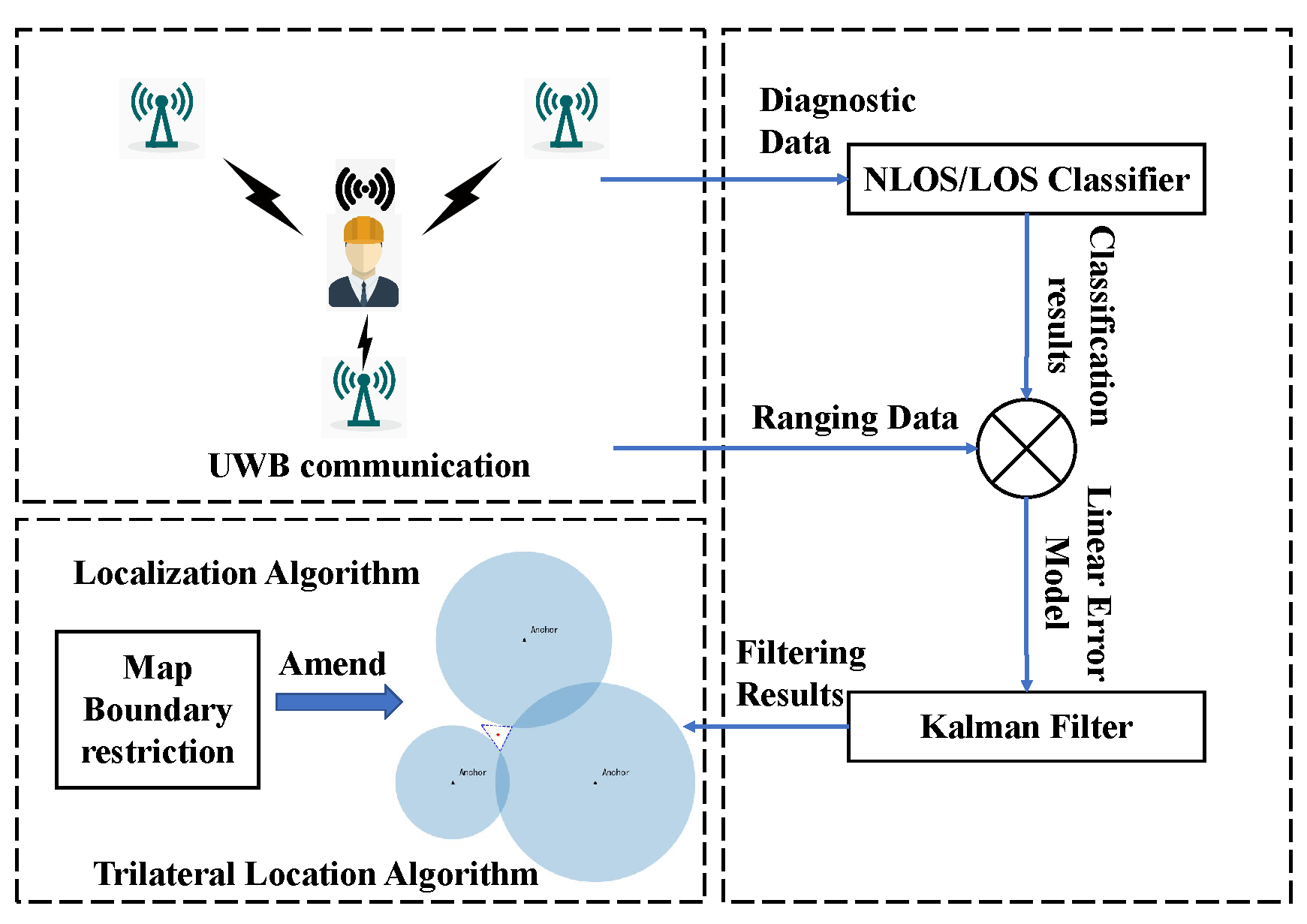

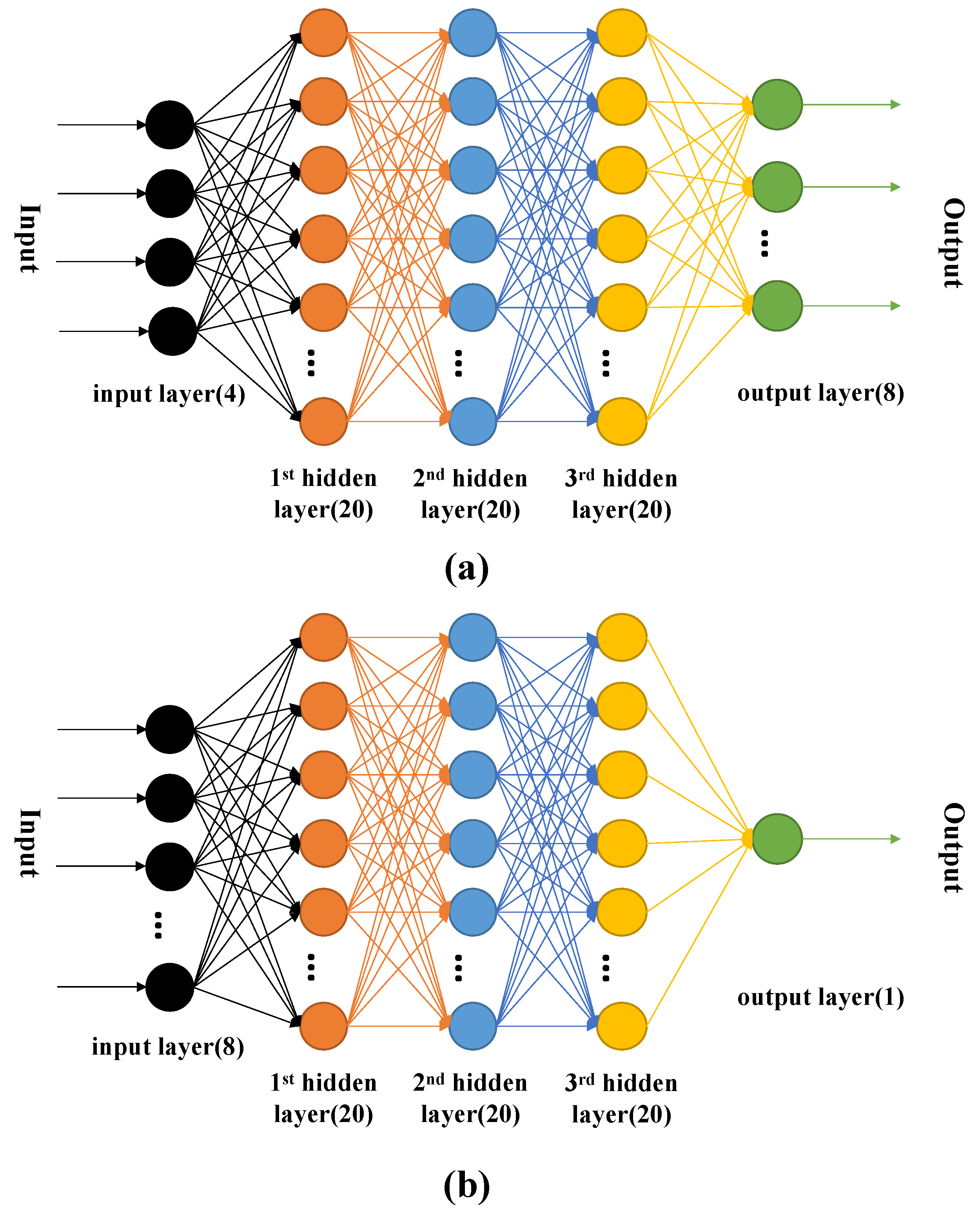
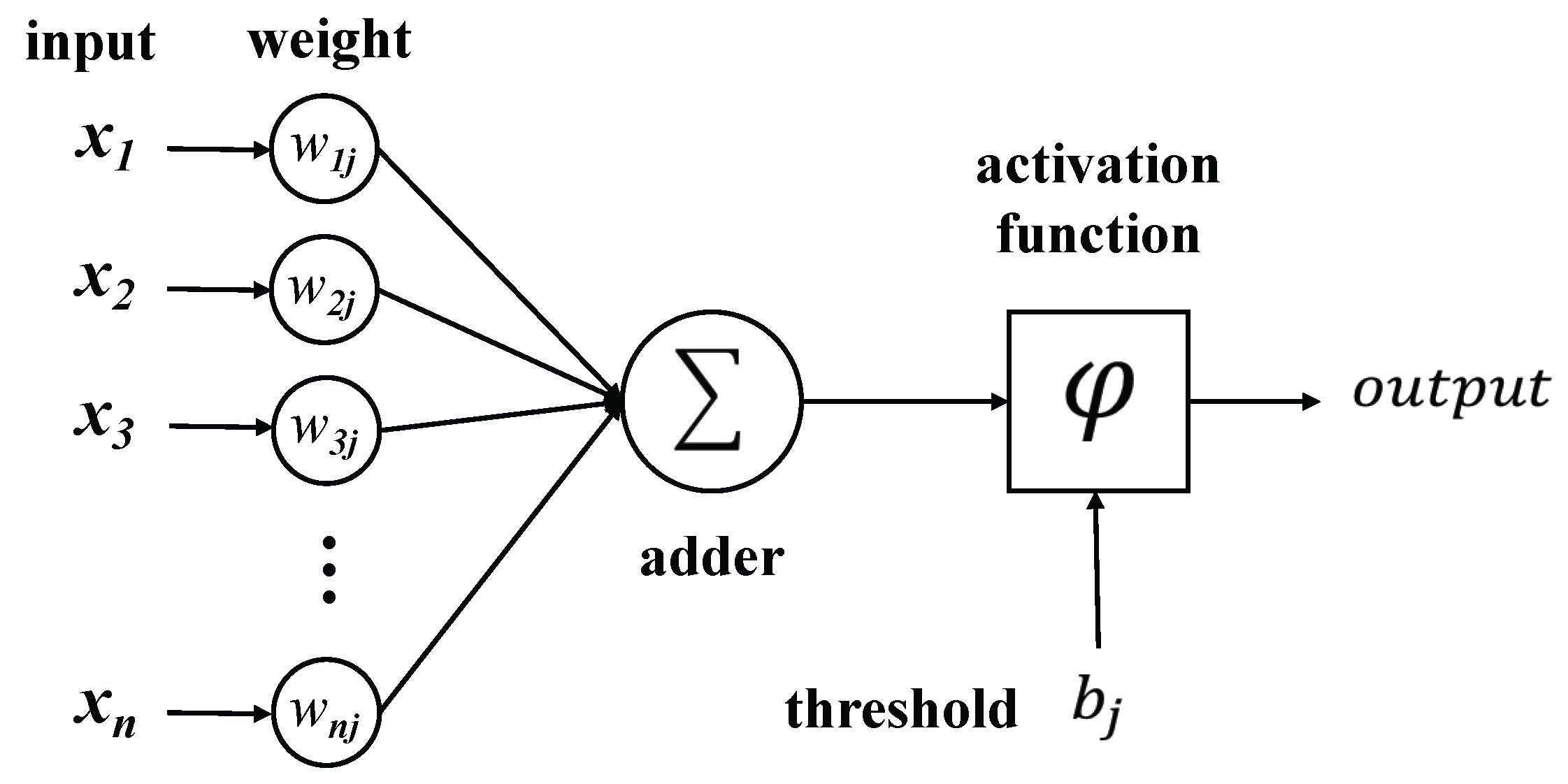
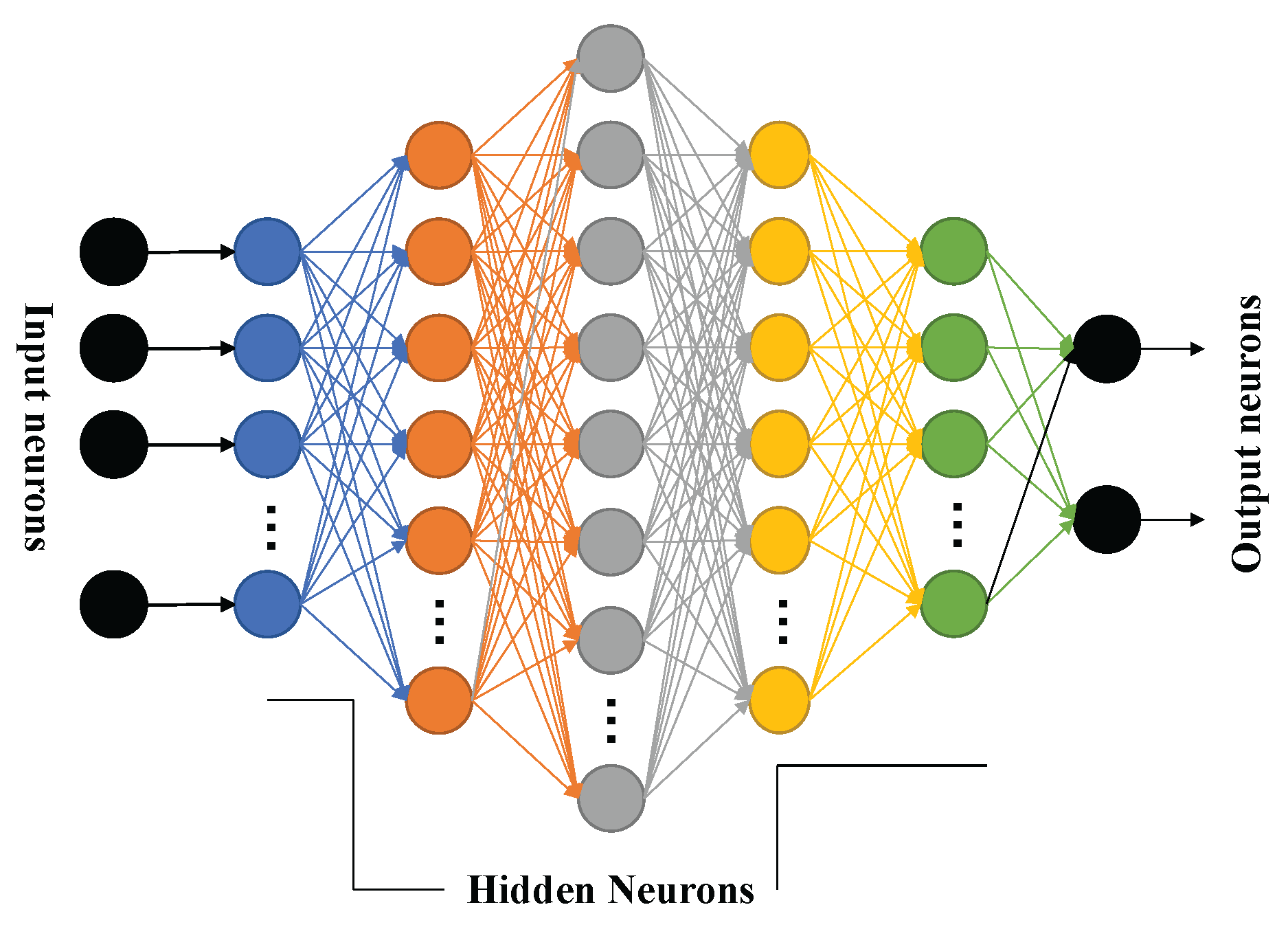

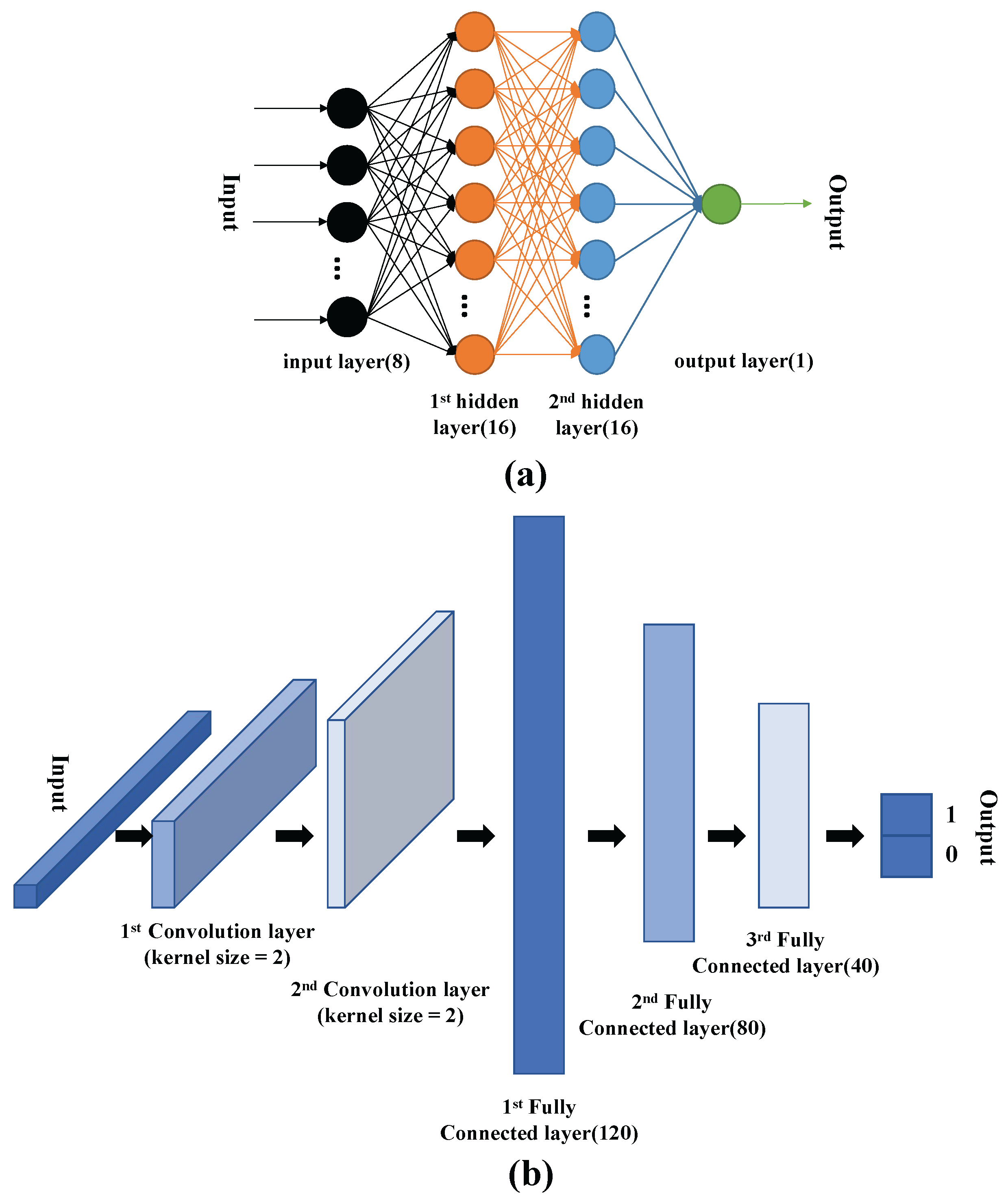

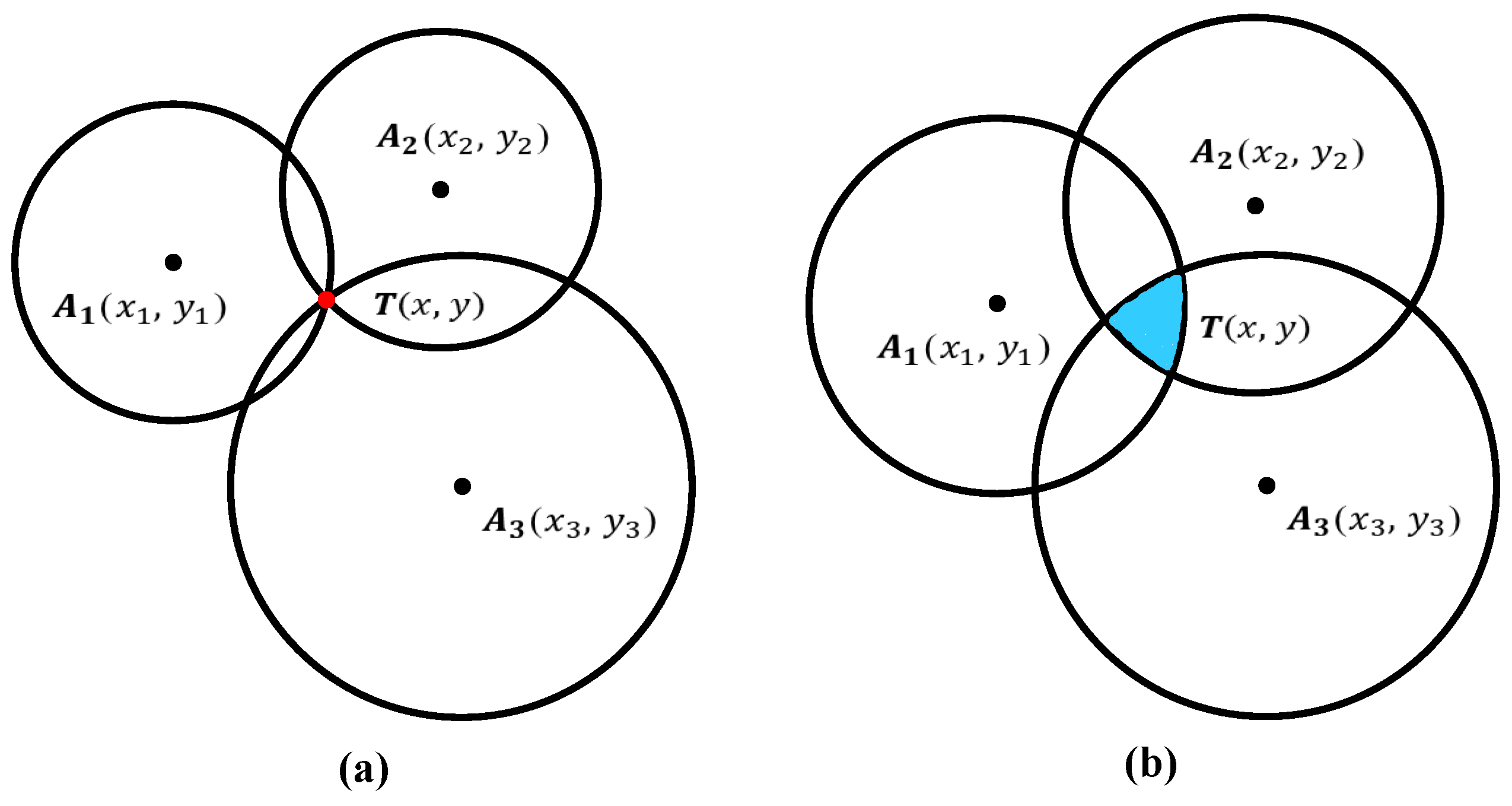

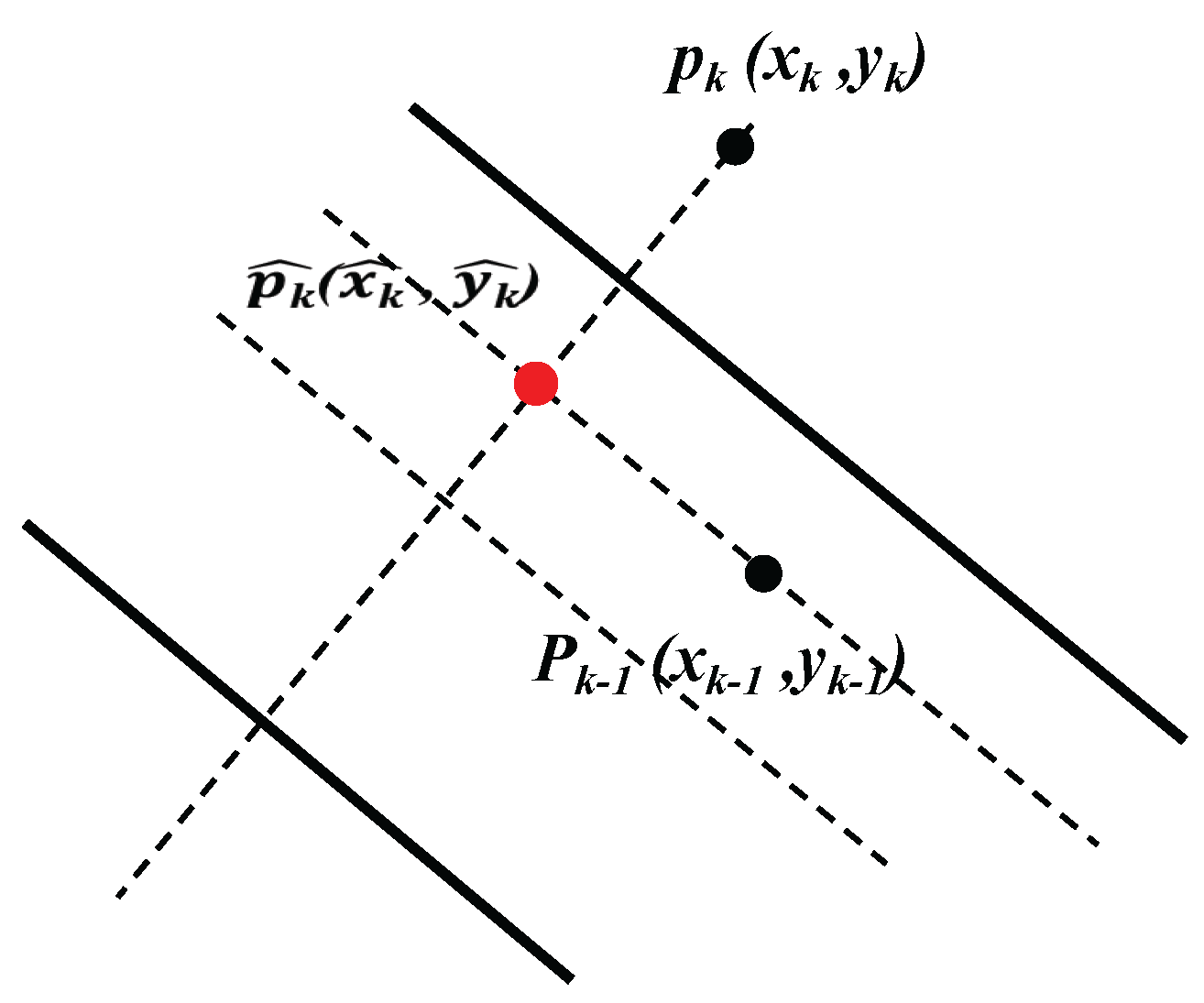
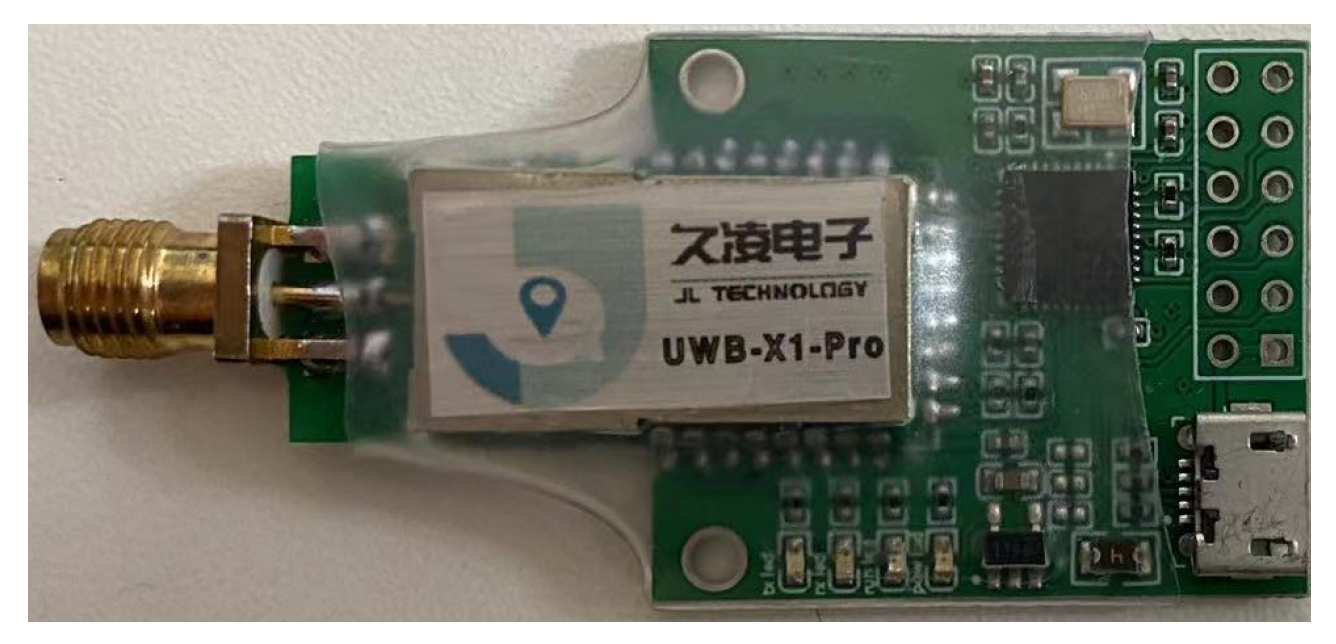
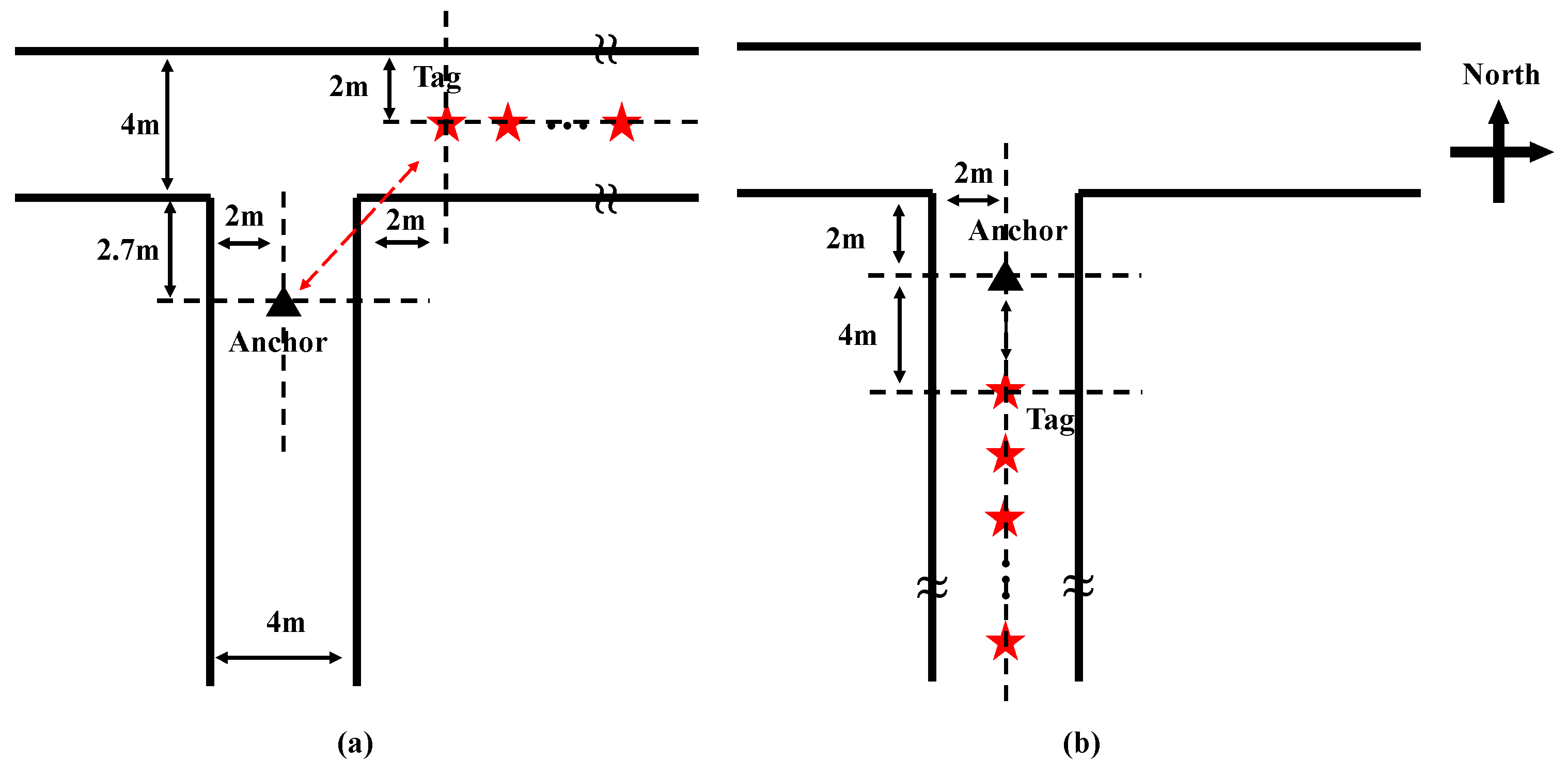

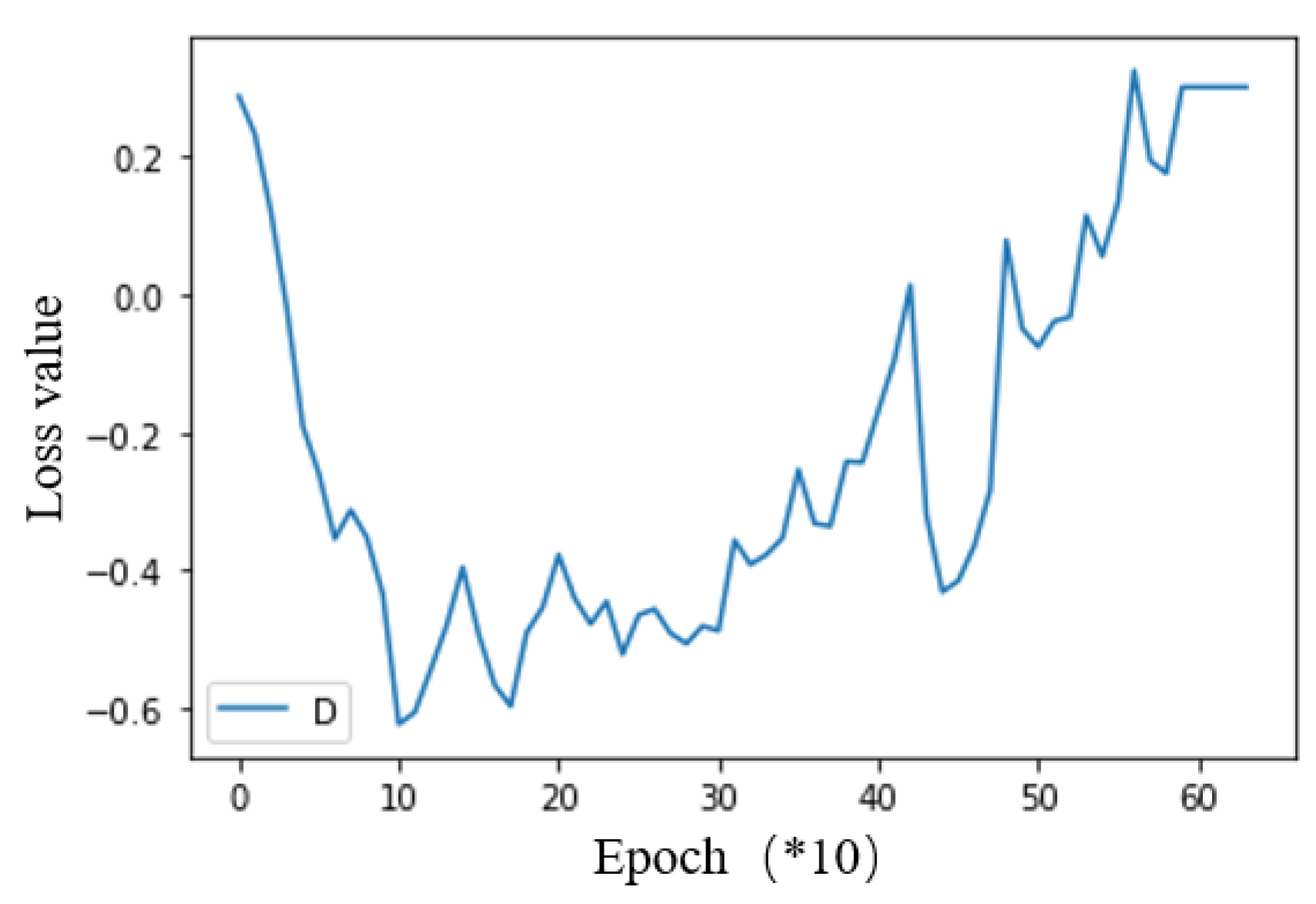
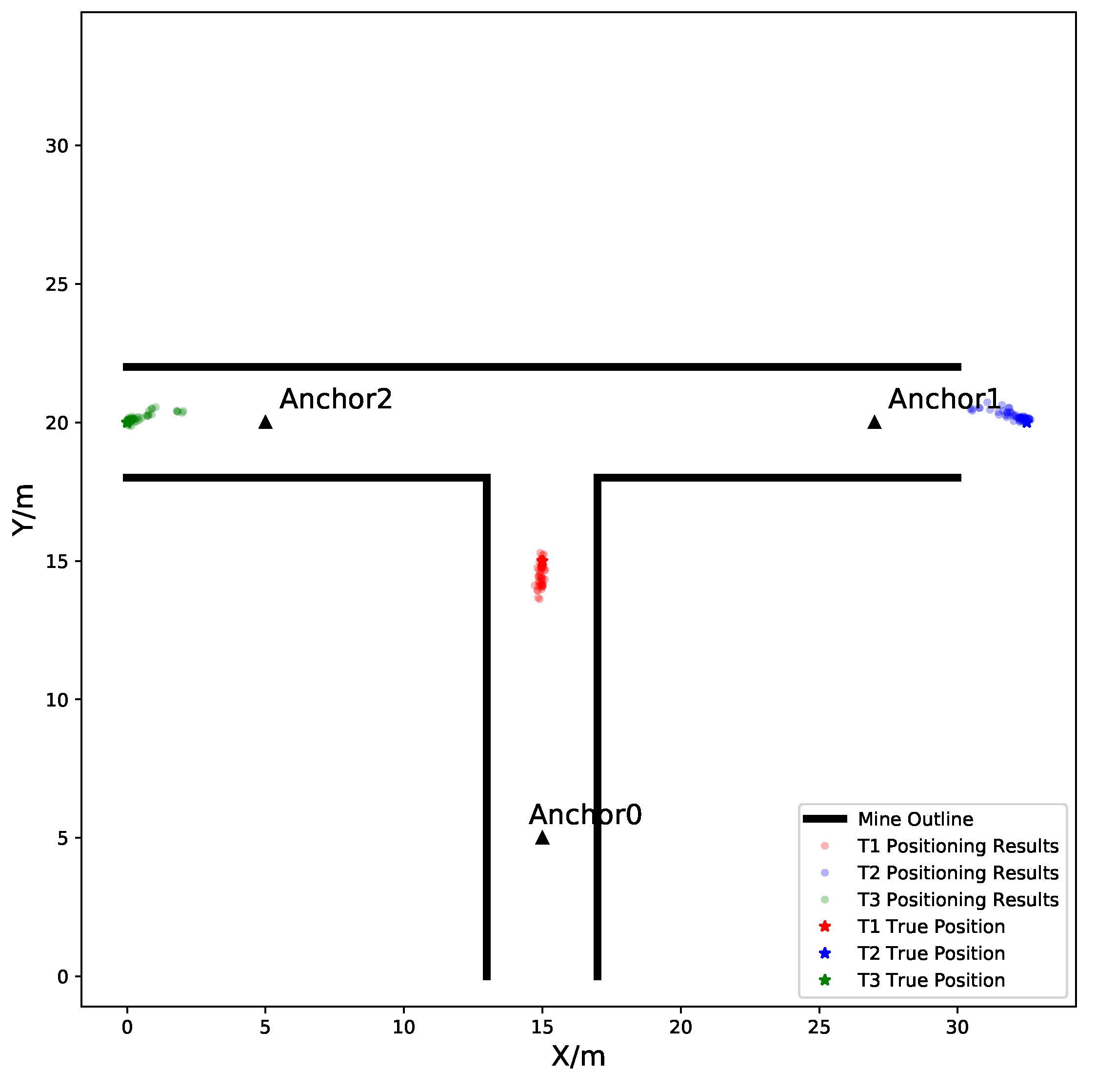


| Serial Number | Symbols | Meaning |
|---|---|---|
| 1 | firstPathAmp1 | the magnitude of the accumulator tap at the index 3 beyond the integer portion of the rising edge FP_INDEX reported in Register |
| 2 | firstPathAmp2 | the magnitude of the accumulator tap at the index 2 beyond the integer portion of the rising edge FP_INDEX reported in Register |
| 3 | firstPathAmp3 | the magnitude of the accumulator tap at the index 1 beyond the integer portion of the rising edge FP_INDEX reported in Register |
| 4 | stdNoise | the standard deviation of the noise level seen during the LDE algorithm’s analysis of the accumulator data. |
| 5 | maxGrowthCIR | a growth factor for the accumulator which is related to the receive signal power. |
| 6 | firstPathIdex | the position within the accumulator that the LDE algorithm has determined to be the first path. |
| 7 | rxPreamCount | the number of symbols of preamble accumulated. |
| 8 | C | the Channel Impulse Response Power value reported in the CIR_PWR field of Register file |
| NLOS/LOS | Number of Set | Total |
|---|---|---|
| NLOS | 12 | 1812 |
| LOS | 54 | 6967 |
| total | - | 8779 |
| Static/Dynamic Experiment | Position | Amount of Sample Data (Group) |
|---|---|---|
| red | 70 | |
| Static experiment | blue | 68 |
| green | 68 | |
| Dynamic experiment | - | 104 |
| Using the Data Generated by the Generator | Precision | Recall | f1-Score | Support | |
|---|---|---|---|---|---|
| LOS | 0.89 | 0.96 | 0.93 | 2092 | |
| NO | NLOS | 0.80 | 0.56 | 0.66 | 542 |
| accuracy | 0.88 | 2634 | |||
| LOS | 0.91 | 0.95 | 0.93 | 2092 | |
| YES | NLOS | 0.78 | 0.65 | 0.71 | 542 |
| accuracy | 0.89 | 2634 |
| Using the Data Generated by the Generator | Precision | Recall | f1-Score | Support | |
|---|---|---|---|---|---|
| LOS | 0.93 | 0.96 | 0.94 | 2092 | |
| NO | NLOS | 0.82 | 0.72 | 0.76 | 542 |
| accuracy | 0.91 | 2634 | |||
| LOS | 0.94 | 0.95 | 0.94 | 2092 | |
| YES | NLOS | 0.79 | 0.77 | 0.78 | 542 |
| accuracy | 0.91 | 2634 |
Publisher’s Note: MDPI stays neutral with regard to jurisdictional claims in published maps and institutional affiliations. |
© 2022 by the authors. Licensee MDPI, Basel, Switzerland. This article is an open access article distributed under the terms and conditions of the Creative Commons Attribution (CC BY) license (https://creativecommons.org/licenses/by/4.0/).
Share and Cite
Zhao, Y.; Wang, M. The LOS/NLOS Classification Method Based on Deep Learning for the UWB Localization System in Coal Mines. Appl. Sci. 2022, 12, 6484. https://doi.org/10.3390/app12136484
Zhao Y, Wang M. The LOS/NLOS Classification Method Based on Deep Learning for the UWB Localization System in Coal Mines. Applied Sciences. 2022; 12(13):6484. https://doi.org/10.3390/app12136484
Chicago/Turabian StyleZhao, Yuxuan, and Manyi Wang. 2022. "The LOS/NLOS Classification Method Based on Deep Learning for the UWB Localization System in Coal Mines" Applied Sciences 12, no. 13: 6484. https://doi.org/10.3390/app12136484
APA StyleZhao, Y., & Wang, M. (2022). The LOS/NLOS Classification Method Based on Deep Learning for the UWB Localization System in Coal Mines. Applied Sciences, 12(13), 6484. https://doi.org/10.3390/app12136484






